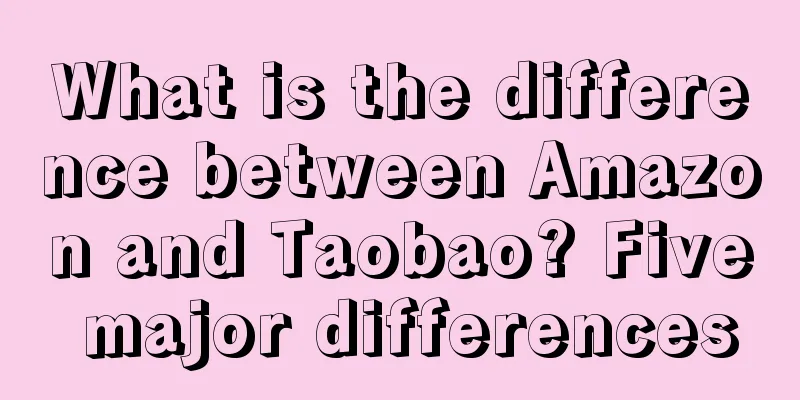The foundation of corporate strategy: how to build a brand

1. Brand competitiveness means enterprise competitivenessHowever, in the process of brand management, enterprises often do not pay enough attention to the brand, resulting in fragmented brand awareness and brand building , so that the results of enterprise brand building are not ideal. Some enterprises have found many professional companies to make brand strategy plans, but still have not figured out the direction of the brand. What's worse, in rounds of brand strategy discussions, the company's resources are constantly consumed, and the company is tormented to death in the brand building project. Today, let’s get back to the basics and talk about how to carry out brand building and how to make the brand highly competitive . 2. The ultimate battlefield of brand competition is the customer mindTrout, a positioning theorist, proposed that "cognition is greater than facts". After this sentence was widely recognized by entrepreneurs in China, it caused a great misunderstanding, thinking that positioning is actually fooling customers, there are no facts, only cognition. In fact, this sentence is not fully expressed clearly. The complete expression should be "cognition has a greater impact on behavior than the fact itself". From the perspective of behavioral psychology, all human behaviors (including consumer behaviors) are determined by cognition. If facts are not transformed into cognition, we may not know the existence of facts, and they will not affect behavior. From this perspective, physics itself is constantly improving human cognition of the facts of the objective world. The "geocentric theory" and "heliocentric theory" were regarded as the norm in that era, which fully demonstrated that cognition is greater than facts. The same is true in the business world. When we take out a product, we will most likely ask what brand it is, rather than which company produced it. Customers buy products based on the brand rather than the company. For this reason, whether it is a B2B or B2C company, or even a charity organization, it needs to build a brand. When we donate to charity organizations, we will also ask whether to donate to the One Foundation, the International Red Cross, or the Chinese Red Cross. Donating to different organizations will lead to different behavior patterns for donors. 3. The basic unit of corporate strategy is brand strategyMcKinsey, the world's most famous management consulting firm, believes that strategy is taking coordinated actions around a goal. In McKinsey's definition, brand and customer mindset are not reflected more, and it mainly reflects operations and improvements. Porter, the father of competitive strategy, defines strategy as: strategy is to create a unique value positioning through a series of different operational activities. Porter divides strategy into three basic types: cost leadership, differentiation, and focus. Brand marketing professionals believe that strategy is to make your company and products stand out in the minds of potential customers. In fact, these three statements are not complete and instructive enough. If we start from the basic unit of competition, the brand, the basic unit of strategy is the brand, and divide the strategy into corporate strategy and brand strategy, corporate strategy is equal to the sum of brand strategy. Corporate strategy is used to discover opportunities for new categories or new positioning, and then brand strategy is used to capture the right opportunities. To capture one opportunity, a single brand strategy is usually adopted, and to capture multiple opportunities, a multi-brand strategy is adopted. Therefore, there is a difference between single brand strategy and multi-brand strategy in corporate strategy. 4. Brand strategy = positioning × matchingAs Xiaomi's new quarterly financial report has just been released and is still hot, let's take Xiaomi as an example. From the perspective of corporate strategy, Lei Jun is an excellent entrepreneur. Lei Jun discovered four important opportunities during the time window: the mid-range smartphone Xiaomi, the mobile social software Mi Chat, the low-end smartphone Redmi (now renamed Redmi) priced at 1,000 yuan, and the smart hardware Mijia. The above are all the successes of Xiaomi's corporate strategy, which discovered major category opportunities and tried to capture them. But it is also a mistake in brand strategy. All of the above are brand extensions of Xiaomi family. When the brand extension is tied to Xiaomi, in addition to destroying the expert brand image of Xiaomi mobile phones, it also affects the independence of the channel brand selection of "Xiaomi Mall". As a channel brand, "Xiaomi Mall" should do multiple-choice questions and be able to quickly add products that the new generation of digital stores should have according to customer perception. (Supplementary explanation of matching: matching refers to the brand operation activity system within the enterprise, through which the uniqueness of positioning is guaranteed to gain competitive advantage, and the matching system is used to increase the barriers for competitors to imitate and enter). Volvo has nearly half of the world's automobile safety patents, so its safety positioning is very solid. Red Bull, Wanglaoji, Coca-Cola and other brands can obtain high market share and profits, which is also due to their good performance, making the entry barrier of competitors extremely high. 5. The best strategy to win the market is to focusFocus in business means using all resources in a coordinated way to achieve a single goal. The focus is a single goal. However, a single goal is difficult to set. It can only be truly implemented by combining it with specific strategic theories. Strategic focus can start with brand focus. Brand strategy naturally conforms to the law of focus. 6. Focusing on brand strategy is the first step in focusing on corporate strategyThe focus of brand strategy has a dual meaning. The first is cognitive focus on the mental battlefield, and the second is operational focus on the physical battlefield. Cognitive focus considers cognitive efficiency, how to reduce the load and resistance of communication, usually "less is more". Operational focus focuses on operational efficiency, not the less the better, but to take into account economies of scale and scope. McDonald's cognitive focus is hamburgers, KFC's cognitive focus is fried chicken, but in terms of operation, both companies sell hamburgers, fried chicken, French fries, cola, ice cream, etc., taking into account economies of scope, and behind this is complementary consumption and related consumption. This is what it means to be inconsistent in words and deeds. Words and deeds are not the same thing. We must avoid dogma. The process of focusing is a process of establishing first and then breaking. The things to be established must be tested. After seeing the effect, you will have confidence to break. There are also methods to break. You can use the ratio of the last elimination, or you can control the speed. Focusing means subtraction. Subtraction is to release those resources that are occupied inefficiently, add them to the focus, and do addition on the focus, so that you can avoid mediocrity. Subtraction requires courage, but addition on the focus requires creativity, which is more important and more difficult. 7. The cornerstone of building a brand is to occupy the categoryCategory is the last level of classification before customers make a purchase decision. Customers can associate brands from this classification. If they buy cola, they can associate it with Coca-Cola; if they buy functional drinks, they can associate it with Red Bull and Dongpeng; if they buy herbal tea, they can associate it with Wanglaoji; if they buy mineral water, they can associate it with Nongfu Spring; if they buy sugar-free drinks, they can associate it with Yuanqi Forest. We can think of the category as an iceberg, and the brand is just the tip of the iceberg. You can put the brand flag on the category iceberg. When the category is growing, you will feel that you are getting taller and taller, but when the iceberg is melting, no matter how hard you try, you will fall into the water sooner or later. So when the iceberg melts, the brand enters a strategic retreat period, and we need to start the second brand, that is, the second growth curve. Sometimes, even if the iceberg has not melted, the leading brand can easily cover the top of the mountain. For example, Samsung is positioned as a large screen, and the large screen feature is easy to be covered by the leader. When Apple launched a large-screen mobile phone, Samsung was silenced. 7. There are three types of categories: concrete categories, abstract categories, and abstract categories.1. Specific categoriesWhen we mention the category of oranges, we think of Chu Orange. Although it does not have very high sales, the brand is well-known. As long as the supply bottleneck is solved, it can grow rapidly. Before, Chu Orange was defined as rock sugar orange, and the supply bottleneck was too obvious. Now it has expanded the definition of Chu Orange to represent high-quality oranges, and the supply bottleneck of product selection has been solved. 2. Abstract categoriesAbstract categories are categories that customers will consider in their purchase decisions but cannot complete. When we renovate our homes to a certain stage, it is time to buy electrical appliances. Electrical appliances are an abstract category. We must be specific to refrigerators, air conditioners, washing machines, rice cookers, etc. to complete the purchase decision. Abstract categories have a characteristic that they can be transformed into a specific category by adding a word representing the sales place or sales method, also called a channel category, such as "electrical appliance mall": Suning Appliance and "fruit store": Baiguoyuan. 3. Fake productsPseudo categories are concepts that customers do not use in purchasing decisions, but due to the internal thinking of the company, when these concepts are used to communicate with customers, they become pseudo categories. If it is only used within the company, it should be a professional and academic classification. But when you use it to communicate with customers, it is not valid and becomes a pseudo category because customers do not understand it, such as white goods, kitchen appliances, motor vehicles, etc. 8. There are five types of corporate strategic focus1. A single brand dominates a positioningMost small and medium-sized enterprises may only have one brand, so their corporate strategic focus type is that a single brand dominates a positioning. For example, Zhou Hei Ya dominates the brand positioning of mid-to-high-end duck necks. 2. Multiple brands dominate a categorySome categories have multiple important characteristics, and it is difficult for a single brand to dominate. A typical example is General Motors, which had five brands during the Sloan era: Buick, Chevrolet, Pontiac, Oldsmobile, and Cadillac, accounting for 60% of the North American sedan market. In the same category, the supply, production, and marketing systems are usually similar, so it can generate synergy, solve a lot of resources, and compensate for the dilution of entrepreneurial talent. 3. Multiple brands dominate an abstract categoryIf the category is relatively small, it cannot accommodate the accumulated resources and capabilities of the enterprise, so it will enter the focus of multiple brands leading an abstract category. The source of synergy of abstract categories is also similar supply, production and marketing systems. The representative enterprise is Coca-Cola. Carbonated beverages are an abstract category dominated by five brands: Coca-Cola, Sprite, Fanta, Xingmu and Tab. 4. Multiple brands dominate a value networkCoca-Cola has begun to dominate the larger soft drink category with multiple brands, such as Ice Dew, Pure Water, COSTA Coffee, Minute Maid, etc. This is a multi-brand dominance of a value network. The value network is a business network composed of related upstream and downstream categories, which is usually an opportunity that only exists because of disruptive innovation. Create a value network through disruptive innovation. During the development of the value network, you can promote new brands to dominate this opportunity. 5. Focus on core business + strategic investmentAlibaba is also a multi-brand value network. When Taobao was doing e-commerce, banks did not provide supporting payment, so it developed Alipay. Alipay had change and developed Yu'ebao, which has now become the world's largest money fund. E-commerce needs logistics, so it created Cainiao, and later Sesame Credit. The e-commerce value network began to expand offline, and the new retail value network could no longer support it, so it entered the fifth stage, called core business focus plus strategic investment, which is also a type of focus, which is minimal diversification, and there are corresponding synergy effects. The move of multiple brands to abstract categories is the synergy of the supply, production and marketing system. Transactions within a value network can reduce transaction costs to a certain extent, especially in the era of big data, when the data of the entire value network can be gathered together to produce greater efficiency. 9. Three things to know when building a brand1. First, be clear about the categoryEfficiently match customer needs. I believe that categories contribute more than 60% to matching customer needs, and the remaining 40% is completed by differentiation and credentials. Positioning theory mentions that "customers think with categories and express with brands", that is, customers think about their needs with categories. When a need arises, they immediately think of what they want to solve, and then use the brand to assist in the choice. After Juewei Duck Neck was launched, they felt that the word "duck neck" was too low, so they removed the two words, resulting in a decline in sales. There was no way to bring back the two words "duck neck". At first, they were made smaller, and it was found that sales increased, but they had not recovered. Finally, the two words were restored to their original size, and sales also recovered. 2. The second is to clearly recognize that categories are inherently unequalCategories represent the biggest opportunities, because most brands are established by creating new categories, but categories are inherently unequal and inherently strong and weak. The category itself needs to complete a "mental pre-sale" process, that is, whether it can enter the customer's shopping list. If it is just a temporary purchase made by consumers on the spot, it belongs to the mental pre-sale of an unfinished category, and this category is a weak category. And the pitfalls of weak categories are the most common for companies, investors, and entrepreneurs. On the contrary, it is a strong category. There are also some categories that are medium to weak, which can complete mental pre-sales by themselves, but often have excess performance, and most companies can meet customer needs. At this time, customers are unwilling and do not need to remember the brand specifically, such as glue, nail clippers, staplers, etc. Weak categories are not conducive to building expert brands, which makes it difficult for us to create brands, but brands are the core results of business operations, so we must look at brands flexibly, both from the perspective of customers and from the perspective of reducing transaction costs and information costs. At this time, there are several ways. One is to be endorsed by a strong channel brand, such as Walmart's Choice; one is to extend a strong brand, such as Dole; and another is to take a step back and become a supplier brand. At this time, you will find that the value center plays an endorsement role, provides guaranteed value, and even demonstrates value. It is the channel brand, such as Pagoda. 3. The third is to clearly recognize that category differentiation can bring opportunitiesNew categories generate new positioning opportunities, that is, new brands are born, and new categories mainly come from category differentiation. The dynamics of category differentiation is that as a category grows, customers gradually have different tastes, but it is impossible to satisfy every customer in a differentiated way. Only when niche demand reaches a critical economically feasible scale will some products be differentiated in a targeted manner. When differentiation reaches cognitive isolation, customers think this is another category, and a new category is formed. Therefore, cognitive isolation is a sign of the formation of a new category, but because customers' cognitive standards, differentiation standards and differentiation paths are not unified, there is still an incomplete differentiation phenomenon. For example, for wine, heavy users are more differentiated, including white wine, red wine, and sparkling wine. Red wine is further divided into Cabernet Sauvignon and Cabernet Sauvignon, but for wine novices, there are only red wine and white wine. If you can discover a new differentiation force, you may find a huge opportunity for a new category. A strong new category usually creates a strong new brand, or even several new brands. 10. To build a brand, you need to know clearly how you are different"What's the difference" is to clarify the positioning. Positioning is not only about determining the category, but also about the position in the category, that is, differentiation. Therefore, a clear positioning must form a competitive difference for customers. One criterion is whether customers will ask "so what". "Mind map" is often used in positioning - draw concentric circles, with the category in the center and the related brands in the market listed in the outer circle, and then see what position these brands have occupied, and whether there is a blank position that is valuable to occupy. Differentiation can be attributed to certain characteristics of the category. We need to break down the concept until we can grasp it. Category characteristics refer to the differentiation concepts that can influence customer choices and are attached to the category. They can be divided into two categories: physical characteristics and market characteristics. When looking for differences, we can look for them from physical characteristics and market characteristics. 11. Branding requires telling users clearly why they are differentHow can we see this? It can be expanded from three aspects 1. Start with the brand’s effective promiseSome effective promises are explicit, that is, written in black and white, or written in the terms of service, or even written on the doorplate, such as free tasting, refund if not satisfied with the trial, which customers can feel at ease at a glance. Others are implicit promises, which customers will also regard as explicit, such as famous founders, corporate reputation, dedicated assets, registered capital scale, etc. 2. Verification by customers themselvesProducts are the most direct credentials. The product’s body, packaging, etc. can all be directly perceived. The product’s sales location and service are also part of the experience. On-site experience is an important credential, but past experience is an even more important credential. As long as the customer has truly experienced it, anything else may not matter. Another is visibility. If the brand is not seen everywhere, customers will not believe it. There is also associated cognition. For example, customers believe that walnuts nourish the brain and herbal tea removes heat are common sense for customers. The clustering phenomenon of brands can also serve as a credential. 3. Start with a trusted third party certificationOther customers are our important credentials, such as typical customers, success stories, word of mouth, etc. There are also neutral third parties and non-neutral third parties. Whether they are neutral or not depends on the customer's perspective. If the customer thinks that they are neutral without spending money, they are non-neutral if they spend money. For example, customers believe that news reports are free and therefore believe them. In the upgraded positioning theory, Dianping is a shopping guide brand, an opinion leader statistics agency, and also a neutral third party; guarantee/insurance agencies, well-known partners, strong media advertising, celebrity endorsements, etc. are non-neutral third parties. 12. Do a good job in the four major aspects of the brand1. Matching 1: Brand nameA good brand name can bring huge profits. It makes people feel good when they hear it, and makes people think it is an expert brand, and they will remember it after hearing it once. A bad brand name is like sand in your shoes, which makes you more and more tired, makes people feel unprofessional, and makes people forget it even after hearing it three times. It also increases the difficulty of referrals, and ultimately costs more extra money. 2. Matching 2: Category NameNot all entrepreneurs have the opportunity to name a category, but many entrepreneurs are doing innovative things and creating new categories, so you must name the new category. This is your unshirkable task. If you fail to do it well, it will seriously affect the development and growth of the category. 3. Matching 3: AdvertisingEvery contact point with customers is an opportunity for positioning communication. All actions in dealing with customers can spread your positioning. However, advertising is still unique. It is the most expensive way to communicate positioning. Therefore, advertising master John Wanamaker said, "I know that half of the advertising budget is wasted, but I don't know which half." A good advertising slogan must meet the "two languages and three qualities" rule. Two languages: sales language and customer language; three qualities: feasibility, competitiveness and infectiousness. 4. Matching 4: Draw the brand's business canvasThe business canvas includes corporate strategy, brand positioning, supply system, products, customers, reach, conversion, lock-in, and expansion. In terms of corporate strategy, there is category analysis, whether it is a single-brand strategy or a multi-brand strategy; brand positioning requires a competitive analysis. After answering the three questions of the brand, we can define the product and have the concept of the overall product. Service is also part of the product, as well as the product portfolio; there are many classification methods for matching in the supply system, and different categories of matching have different processing methods. Many times, competitive barriers can be established in places that we cannot see. The definition of a business model is actually the transaction structure of stakeholders. What we are talking about is a brand business model, the core of which is the transaction structure between the brand and the customer, which is divided into reach, conversion, lock-in and amplification. Reach is how to reach customers, including channel reach, media reach, advertising, public relations, etc. Then conversion is a more important link, one is brand presentation, and the other conversion is pricing strategy. Different pricing strategies bring different conversion rates and profit returns. Price is not a number, but a contract structure. The next step is lock-in, which includes product lock-in and relationship lock-in. In the final analysis, the product must be strong. Once customers use the product, their past experience becomes the most important trust. However, strong product strength alone is not enough. Sometimes we also need to adopt relationship lock-in, such as membership system. The last link is expansion. Let old customers and sold products bring in new customers, including product expansion and social expansion. This also requires strong product power. Sometimes you can also motivate them by making some recommendations. In the expansion link, think of more tricks and you will get very significant results. Author: Liu Yichun Source: WeChat public account "Liu Yichun's Brand Business Innovation (ID: shangyeyiguohui)" |
<<: In 2023, I decided to go to the temple for a vacation
>>: Conduct a data-driven experience review for your team
Recommend
You can easily earn 20,000+ yuan a month through the official account. This is a really great way to monetize.
The author of this article breaks down the three m...
What are the funding needs of cross-border e-commerce?
Whether you are doing domestic e-commerce or cross...
Car company bosses compete to become Internet celebrities
Lei Jun alone is as good as ten 4A advertising com...
How to unblock a frozen store on Shopee Thailand? What is the reason for the freeze?
No matter what platform you operate your store on,...
Fighting for Double 11: Bilibili and Xiaohongshu’s exploration of live e-commerce
This year's Double 11 is coming, and many plat...
Amazon joins hands with TikTok, has the world of cross-border e-commerce changed?
The cross-border e-commerce sector has ushered in ...
For private domain merchants, is there no other option but to buy traffic at a high price?
In the agency operation business, I have always be...
Who is there at the Paris Olympics?
The 2024 Paris Olympics is not only a global sport...
How do cross-border e-commerce companies view the selling prices of their peers? How do they view the store data of their peers?
In the cross-border e-commerce industry, competiti...
It is said that Xiaohongshu's internal beta test directly attracts microblogs
Xiaohongshu's latest developments may be resha...
The end of product marketing is cilantro?
Do you like cilantro? Regardless of the answer, wh...
《Super detailed! A complete guide to activity review reports》
Activity review reports are essential for evaluati...
Why doesn't Shopee require VAT? Is it necessary to collect taxes?
Transactions on the Shopee platform basically invo...
The "sports economy" behind the Olympics: users and brands are spending money
In 2024, sports events will be held frequently, an...
JD.com finally has a top seller
Liu Qiangdong's digital avatar live broadcast ...









